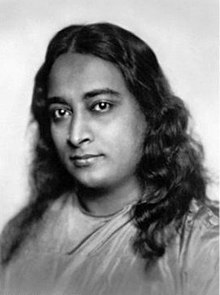imported>Chunbum Park |
imported>John Stephenson |
| (133 intermediate revisions by 5 users not shown) |
| Line 1: |
Line 1: |
| == '''[[Electroconvulsive therapy]]''' ==
| | {{:{{FeaturedArticleTitle}}}} |
| ''by [[User:Gareth Leng|Gareth Leng]]
| | <small> |
| | | ==Footnotes== |
| ----
| |
| | |
| '''Electroconvulsive therapy''' ('''ECT''') is a [[psychiatry|psychiatric]] treatment that involves inducing a seizure in a patient by passing electricity through the brain. ECT was introduced for treating [[schizophrenia]] by the Italian neurologist [[Ugo Cerletti]] in the 1930s, and became a common treatment for mood disorders. While many psychiatrists believe that properly administered ECT is a safe and effective treatment for some conditions, some psychiatrists, former patients, [[antipsychiatry]] activists, and others warn that ECT might harm the patients' subsequent mental state.
| |
| | |
| ECT was a common treatment until the late 20th century, when better drug therapies became available for more conditions. It is now reserved for severe cases of clinical [[depression]] and [[bipolar disorder]] that do not respond to other treatments. When still in common use, ECT was sometimes abused by mental health professionals to punish or control uncooperative patients. Many people came to view ECT unfavorably after negative depictions of it in several books and films, and the treatment is still controversial.
| |
| | |
| In its early days, ECT was given without anaesthesia or muscle relaxants, and patients were often injured as a side effect of the seizure. Now, ECT is given under anaesthesia and with muscle relaxants. ECT without anaesthesia is known as "unmodified ECT", or "direct ECT", and is illegal in most countries.
| |
| | |
| ===Current use===
| |
| ECT is mainly used to treat severe depression, particularly if complicated by psychosis<ref>{{cite journal | author=Potter WZ, Rudorfer MV | title=Electroconvulsive therapy--a modern medical procedure | journal=N Engl J Med | volume=328 | issue=12 | pages=839–46 | year=1993 | id=PMID 8441434}}; see also [http://consensus.nih.gov/1985/1985ElectroconvulsiveTherapy051html.htm]</ref>. It is also used in cases of severe depression when antidepressant medication, psychotherapy, or both, have been ineffective, when medication cannot be taken, or when other treatments would be too slow (e.g. in a person with delusional depression and intense, unremitting suicidal tendencies). Specific indications include depression accompanied by a physical illness or pregnancy, which makes the usually preferred antidepressants dangerous to the patient or to a developing fetus. It is also sometimes used to treat the manic phase of bipolar disorder and the rare condition of catatonia. In the USA, modern use of ECT is generally limited to evidence-based indications. <ref>{{cite journal | author=Hermann R ''et al.'' | title=Diagnoses of patients treated with ECT: a comparison of evidence-based standards with reported use. | journal=Psychiatr Serv | volume=50 | pages=1059-65 | year=1999 | id=PMID 10445655}}</ref> Accurate statistics about the frequency, context and circumstances of ECT in the USA are hard to obtain, as few states have laws that require this information to be given to state authorities. <ref>{{cite news | first = Dennis | last = Cauchon | title = Controversy and Questions Shock Therapy: Patients often aren't informed of full danger | publisher = USA Today | date = 1995-12-06 }}</ref>
| |
| | |
| ''[[Electroconvulsive therapy|.... (read more)]]''
| |
| | |
| {| class="wikitable collapsible collapsed" style="width: 90%; float: center; margin: 0.5em 1em 0.8em 0px;"
| |
| |-
| |
| ! style="text-align: center;" | [[Electroconvulsive therapy#Footnotes|notes]]
| |
| |-
| |
| |
| |
| {{reflist|2}} | | {{reflist|2}} |
| |}
| | </small> |
Latest revision as of 09:19, 11 September 2020

Paramhansa Yogananda circa 1920.
Paramhansa Yogananda (5 Jan 1893–7 Mar 1952) was one of the first Indian teachers from the Hindu spiritual tradition to reside permanently in the West, and in particular, he was the first to teach yoga to Americans. He emphasized the universality of the great religions, and ceaselessly taught that all religions, especially Hinduism and Christianity, were essentially the same in their essence. The primary message of Yogananda was to practice the scientific technique of kriya yoga to be released from all human suffering.
He emigrated from India to the United States in 1920 and eventually founded the Self-Realization Fellowship there in Los Angeles, California. He published his own life story in a book called Autobiography of a Yogi, first published in 1946. In the book, Yogananda provided some details of his personal life, an introduction to yoga, meditation, and philosophy, and accounts of his world travels and encounters with a wide variety of saints and colorful personalities, including Therese Neumann, Mohandas K. Gandhi, Luther Burbank, and Jagadis C. Bose.
Paramhamsa, also spelled Paramahamsa, is a Sanskrit title used for Hindu spiritual teachers who have become enlightened. The title of Paramhansa originates from the legend of the swan. The swan (hansa) is said to have a mythical ability to sip only the milk from a water-and-milk mixture, separating out the more watery part. The spiritual master is likewise said to be able to live in a world like a supreme (param) swan, and only see the divine, instead of all the evil mixed in there too, which the worldly person sees.
Yogananda is considered by his followers and many religious scholars to be a modern avatar.
In 1946, Yogananda published his Autobiography of a Yogi. It has since been translated into 45 languages, and in 1999 was designated one of the "100 Most Important Spiritual Books of the 20th Century" by a panel of spiritual authors convened by Philip Zaleski and HarperCollins publishers.
Awake: The Life of Yogananda is a 2014 documentary about Paramhansa Yogananda, in English with subtitles in seventeen languages. The documentary includes commentary by George Harrison and Ravi Shankar, among others.[1][2]
